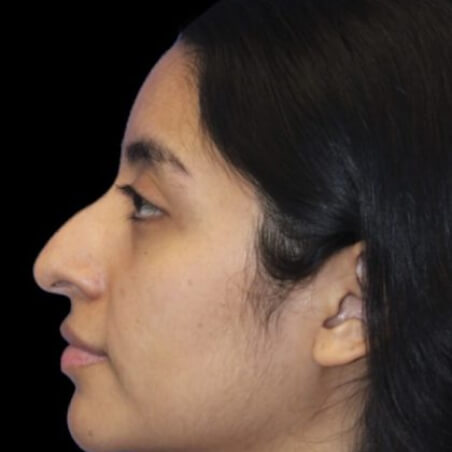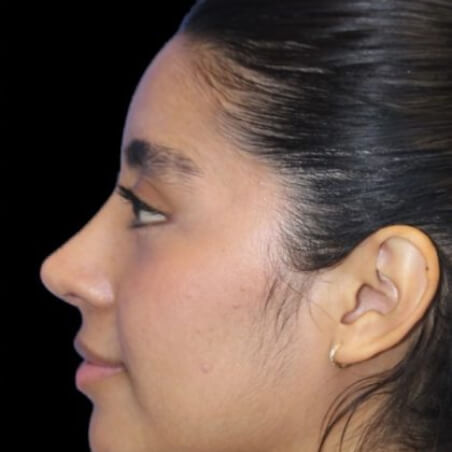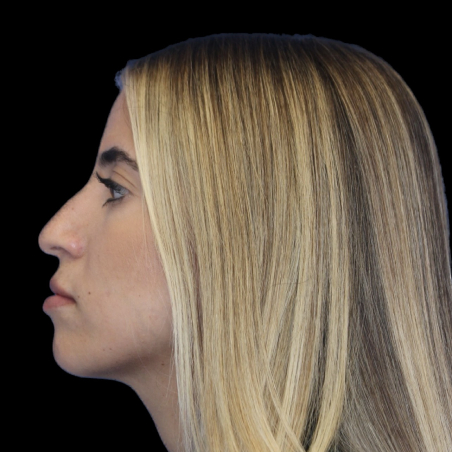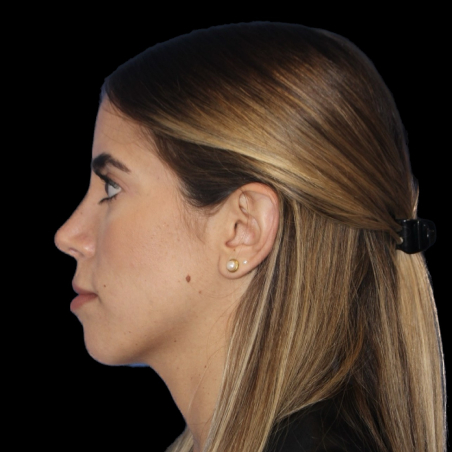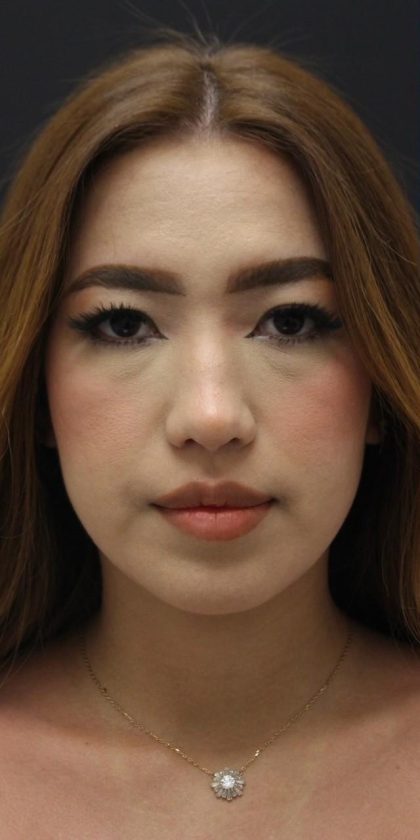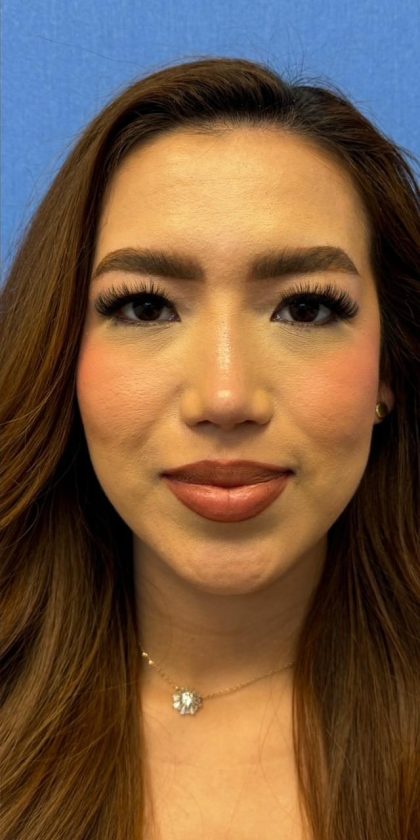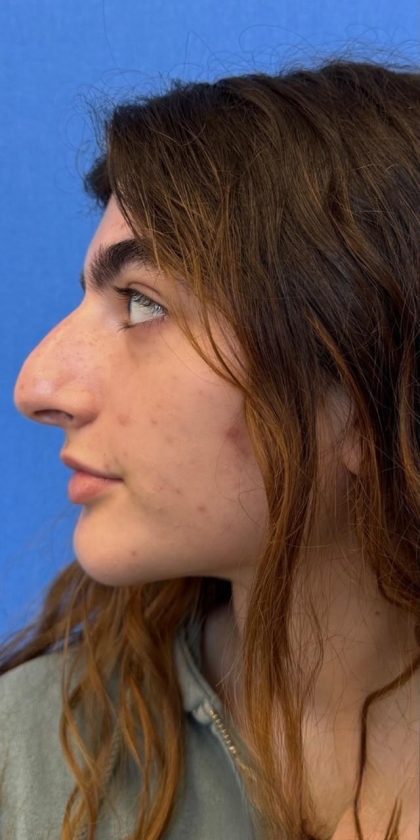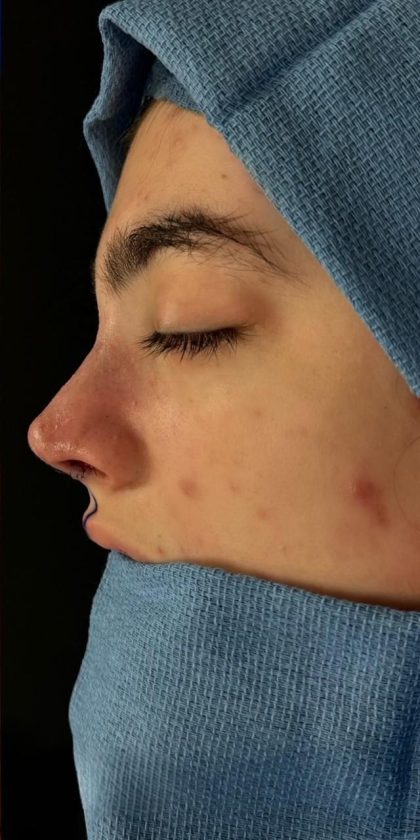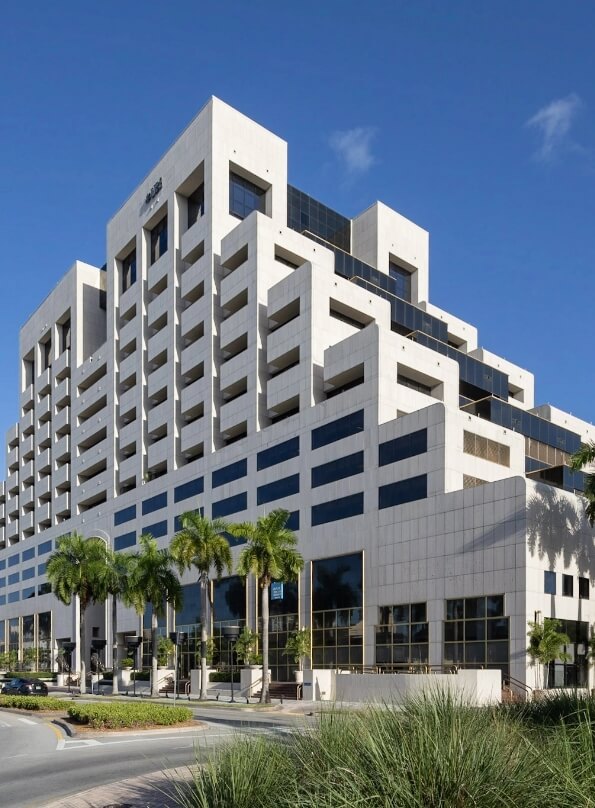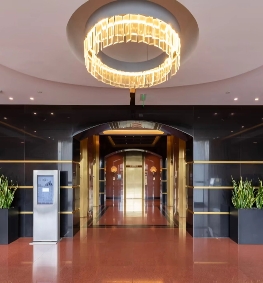Revision Rhinoplasty
Conveniently located to serve the areas of Miami, FL

Revision rhinoplasty, sometimes called secondary rhinoplasty, is a surgical procedure that corrects or improves upon the results of an earlier “nose job.” Patients may seek this surgery after a poorly performed primary rhinoplasty, or they may want subtle changes for a better nasal contour. Due to the nature of this procedure, revision rhinoplasty commonly integrates complex techniques and alterations to achieve an optimal outcome for the patient.
At the Plastic Surgery Institute of Miami, Dr. Marcelo Ghersi and his talented staff provide quality care to patients in and around Miami, FL. He specializes in rhinoplasty and has extensive training and experience with nasal procedures and facial rejuvenation. Dr. Ghersi is uniquely equipped to tackle complex secondary surgeries like revision rhinoplasty.
For those looking to further improve or correct a previous rhinoplasty, schedule a private consultation at PSI Miami today by filling out this form. You may also reach us by calling (305) 446-7700. We look forward to hearing from you!
Contents
- 1 Before and After Photos
- 2 About Revision Rhinoplasty
- 3 Benefits of Revision Rhinoplasty
- 4 Ideal Candidates
- 5 Personal Consultation with Dr. Ghersi
- 6 Preparation
- 7 Revision Rhinoplasty Procedure
- 8 Recovery & Results
- 9 Cost of Revision Rhinoplasty in Miami
- 10 FAQ
- 10.1 How do I know if I need revision rhinoplasty?
- 10.2 How long does secondary rhinoplasty surgery take?
- 10.3 If I injured or broke my nose after primary rhinoplasty, can revision surgery fix it?
- 10.4 Am I a suitable candidate for revision rhinoplasty if my previous surgery was many years ago?
- 10.5 Is revision rhinoplasty ever combined with other surgeries?
- 11 References
Before and After Photos
About Revision Rhinoplasty
Patients seek revisional nose surgery for many reasons. In fact, an estimated 15% of rhinoplasty patients receive secondary procedures to correct certain characteristics. (1) The surgery can correct functional, cosmetic, and anatomic features. Most patients seek secondary surgery to correct cosmetic issues created by the over-resection of nasal cartilage during their first procedure. (2) This means that too much cartilage has been taken away in the initial surgery. Over-resection can cause asymmetry along the dorsum (nasal bridge) or collapse of the middle vault (central inner space of the nose). To remedy this, Dr. Ghersi can take cartilage from somewhere else in the body and place it within the nose to reinforce the structure. Other reasons for revision rhinoplasty include unwanted scarring and nasal implant failure.
Grafting in Revision Rhinoplasty
Revision rhinoplasty is a complex procedure that requires detailed knowledge of nasal anatomy. After a primary rhinoplasty, it is vital to correctly assess the condition of the nose and how much viable cartilage remains. Depending on specifics of the patient’s first surgery, they may require a cartilage graft to restructure and strengthen the dorsum or tip. (2)
Dr. Ghersi typically performs a simple surgery to extract tissue from the ear, of similar density and flexibility to nasal (septal) cartilage and grafts it onto the dorsum where indicated. He carefully sutures the material to secure it, effectively restructuring the shape of the nose. This is especially necessary when a patient’s primary rhinoplasty resulted in the collapse of the middle vault.
A key step to a successful revision rhinoplasty is the initial assessment. Dr. Ghersi uses your medical history, previous rhinoplasty experience, and information about your cosmetic concerns to create the nasal contour you want to achieve.
If you are interested in learning more, please schedule a private consultation at PSI Miami today.
Benefits of Revision Rhinoplasty
For those looking to improve a previous surgery’s results, revision rhinoplasty offers the following benefits:
- Improved Nasal Contour
- Enhanced Facial Symmetry
- Improved Breathing
- Increased Confidence
Dr. Ghersi spends time assessing exactly what happened during the first surgery that led to unsatisfactory results, then creates a tailored plan to address the issues. Some patients even sleep better after their secondary nasal procedure, especially if their first rhinoplasty led to airflow obstruction.
The surgery can correct:
- Sinus Issues
- Nasal Collapse
- Snoring
- Drooping of the Nasal Tip
- Noticeable Dorsal Hump
- Crooked Bridge
Ideal Candidates
The ideal candidate for revision rhinoplasty is someone who is dissatisfied with the results of their primary procedure. They may have certain complications or cosmetic issues that the first surgery created, or need additional alterations to achieve their desired result.
Candidates must be completely healed from their primary rhinoplasty before undergoing revision surgery. In most cases, patients should wait at least one year to let the scar tissue mature and the resulting contour settle into its final shape. (1) This also ensures the procedure is safe and effective, giving them the best chance to heal smoothly the second time around. They should be in good overall health without existing medical conditions that may interfere with recovery.
Personal Consultation with Dr. Ghersi
Dr. Ghersi will meet with you privately to discuss your revision rhinoplasty surgery. During this consultation, he will inquire about your medical history and previous nasal procedure before creating a customized treatment plan unique to you. This meeting will allow ample time to explore your cosmetic concerns after he performs a comprehensive physical examination of the nose. He will then explain the revision procedure process and what it will entail, including possible cartilage donation. At the end of this meeting, the PSI Miami staff will schedule your revision rhinoplasty and provide preoperative instructions.
Preparation
Patients should prepare in the following ways before revision rhinoplasty:
- Request time off of work
- Arrange for transportation to and from surgery
- Create a recovery space at home
- Pick up new prescriptions
- Make easy-to-prepare meals to eat during downtime
- Avoid smoking tobacco and nicotine
- Refrain from drinking alcohol
- Avoid blood-thinning medications (eg. ibuprofen, aspirin)
- Discontinue the use of herbal supplements (eg. vitamin E, ginseng)
Revision Rhinoplasty Procedure
This surgery is often more complicated than primary rhinoplasty due to the complexity and fragility of the nasal structures and the changes that have already been made. Dr. Ghersi and his surgical team first administer general anesthesia to keep you comfortable. Since this procedure also tends to be more extensive, he will likely utilize the open structural technique. He will place a small incision in between both nostrils and maneuver toward the area of concern. If cartilage is needed, he will harvest this from the ear or rib during this same surgery. He will then correct any functional issues within the nose, place the new cartilage to repair its structure, and close the incision carefully to avoid excessive scarring. (3)
Revision rhinoplasty can be a challenging process, however, Dr. Ghersi is an experienced and knowledgeable plastic surgeon who assesses each patient’s circumstances closely to achieve optimal results. We understand that receiving secondary surgery is typically a tough choice to make, and will make sure to strive for safety and patient satisfaction to achieve your goals.
Recovery & Results
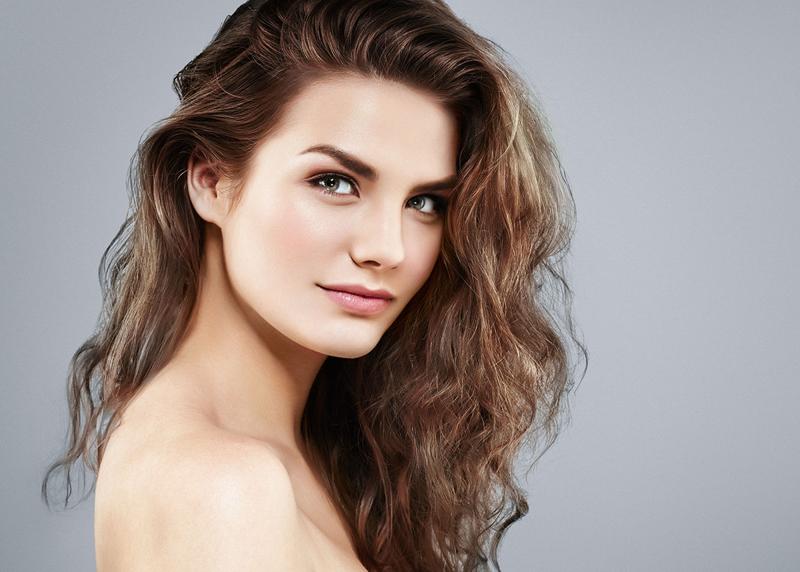
Since every nose and nasal surgery is unique, recovery time can vary widely between patients. The tissues may take longer to settle into their new shape, and the nose could swell for a longer period of time. Many patients take 7 to 10 days off of work to recuperate after this procedure. Patients should avoid all strenuous activities and heavy lifting for 4 to 6 weeks to allow initial healing to occur. Try to keep your head elevated as much as possible while sleeping to curb swelling and residual pain. Dr. Ghersi provides detailed recovery instructions that guide you through the process.
As healing continues, you will start to notice and appreciate your new nasal contour with time. The results of a revision rhinoplasty will not be completely visible for 1 year to 18 months depending on the swelling. Once completely healed, the corrected contour balances with surrounding facial features and enhances your symmetry.
Cost of Revision Rhinoplasty in Miami
The cost of a secondary rhinoplasty varies between patients. It depends on the specifics and length of the surgery. Dr. Ghersi explains your procedure plan and offers a cost estimate during your private consultation. To schedule a meeting with him, please call our office at (305) 446-7700 or fill out this convenient contact form.
FAQ
How do I know if I need revision rhinoplasty?
If you have had previous rhinoplasty and experienced complications, or simply do not like your results, you may be a good candidate for secondary surgery. You may have trouble breathing after the first procedure, or you may wish to alter the bridge or tip of the nose.
How long does secondary rhinoplasty surgery take?
The duration of revision rhinoplasty varies depending on the specific revisions required and the complexity of the case. On average, revision rhinoplasty can take between two to four hours to complete.
If I injured or broke my nose after primary rhinoplasty, can revision surgery fix it?
Yes, revision rhinoplasty can often address issues that arise from injury, including trauma or complications such as a broken nose. However, the success of the revision procedure depends on various factors, including the extent of the damage, the skill of the surgeon, and the condition of the surrounding tissues.
Am I a suitable candidate for revision rhinoplasty if my previous surgery was many years ago?
Time since the initial nose surgery does not necessarily disqualify you as a candidate for revision rhinoplasty. However, factors such as overall health and the integrity of nasal structures may influence candidacy.
Is revision rhinoplasty ever combined with other surgeries?
Absolutely! Two procedures that often go hand-in-hand are rhinoplasties and chin implantation. This surgery places a soft, silicone implant beneath the skin of the chin to enhance your facial profile and create better symmetry. This typically extends the chin’s projection and can dramatically improve the results of nasal contouring surgery.
References
- Jiang A, Chamata ES, Bressler FJ. Revision Rhinoplasty: With Introduction of a Novel Preoperative Assessment Classification System. Seminars in Plastic Surgery. 2021;35(02):078-087. doi:https://doi.org/10.1055/s-0041-1727271
- Suresh R, Doval AF, Newstrom E, Pham T, Alford EL. Primary and Revision Rhinoplasty: A Single Surgeon Experience and Patient Satisfaction. Plastic and Reconstructive Surgery Global Open. 2021;9(9):e3798. doi:https://doi.org/10.1097/GOX.0000000000003798
- Raggio BS, Asaria J. Open Rhinoplasty. PubMed. Published 2021. Accessed May 8, 2024. https://www.ncbi.nlm.nih.gov/books/NBK546628/
